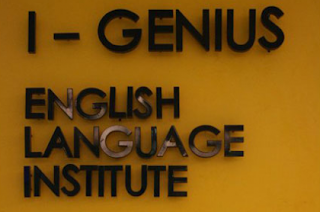เพื่อการพัฒนาตนเองสู่การเป็นประเทศที่พัฒนาแล้วโดยเร็ว ทุกคนจะต้องเรียนในภาษาต่างๆ ที่เหมาะสม เพื่อใช้งานในการแข่งขันในเวทีโลก อย่างเร่งด่วน
Hurry up ..for next developed country..you must be develop your language skill too..in every languages..alternative languages..by anyway..any budget..everyone must be access develop budget by fair ..screen..Equity..for World competitive....We need best living...no need to be immigration..yes or no?Right for full educated..is your basic right?
Sugar day ..boring about Specific Incentive person..not fair..yes or no?
http://lingualgames.wordpress.com/article/10-key-principles-for-designing-video-27mkxqba7b13d-2/
http://www.routledge.com/books/details/9780415240802/
www.sodahead.com/united-states/would-you-welcome-an-increase-in-legal-immigration/question-3638485/?page=14
What do you think? Is this graphic somebody posted, accurate?
http://www.manhattanlanguage.com/courses.php
http://www.geosing.com.sg/facilities.html
http://www.mfa.go.th/dvifa/contents/files/articles-20130701-172222-232712.pdf
ข่าวประชาสัมพันธ์/หลักสูตรอบรม
ประวัติสมเด็จพระเจ้าบรมวงศ์เธอ กรมพระยาเทวะวงศ์วโรปการฯ : ประวัติสมเด็จพระเจ้าบรมวงศ์เธอ กรมพระยาเทวะวงศ์วโรปการฯ
สมเด็จพระเจ้าบรมวงศ์เธอ กรมพระยาเทวะวงศ์วโรปการฯ : พระบิดาแห่งการทูตไทย
ทรงมีพระนามเดิม ว่า พระเจ้าลูกยาเธอ พระองค์เจ้าเทวัญอุไทยวงศ์ พระราชโอรสในพระบาทสมเด็จพระจอมเกล้าเจ้าอยู่หัว กับ สมเด็จพระปิยมาวดีศรี พัชรินทรมาตา (ต้นราชสกุลเทวะกุล) ทรงดำรงตำแหน่งเสนาบดีกระทรวงการต่างประเทศ ตั้งแต่วันที่ 12 มิถุนายน พ.ศ. 2428 (ขณะพระชันษา 27 ปี) ถึง วันที่ 28 มิถุนายน พ.ศ. 2466 ทรงเป็นเสนาบดีกระทรวงการต่างประเทศที่อายุน้อยที่สุด และอยู่ในตำแหน่งยาวนานถึง 38 ปี 16 วัน
ทรงมีบทบาทสำคัญในการดำเนินภารกิจด้านการต่างประเทศหลายประการ อาทิ การเปิดสำนักงานผู้แทนทางการทูตของไทยในราชสำนักต่างประเทศ ณ สำนักเซนต์ เจมส์ แห่งอังกฤษซึ่งตั้งอยู่ที่กรุงลอนดอน การจัดทำสนธิสัญญากับอังกฤษและฝรั่งเศส ทรงได้รับการยกย่องอย่างกว้างขวางเกี่ยวกับสำหรับการรักษาอธิปไตยของไทย
นอกจากนี้ ยังทรงปรับปรุงระบบราชการของกระทรวงการต่างประเทศให้เหมือนกับของบรรดาอารยประเทศ แบ่งส่วนราชการเป็นกองต่าง ๆ ตามภารกิจหน้าที่ เช่น กองกลาง กองการทูต กองการกงสุล กองการคดี กองการกฎหมาย กองเก็บหนังสือ กองแปล กองการบัญชี แผนกคนต่าง ประเทศ ทรงกำหนดระเบียบวิธีร่างและเขียนจดหมายราชการ การรับ-ส่ง การเก็บหนังสือและเอกสารต่าง ๆ และสถิติการเข้า-ออกของหนังสือทุกประเภทของทุกกอง รวมทั้งทรงกำหนดให้ข้าราชการ ลงเวลามาและกลับในสมุดประจำ จนเป็นแบบแผนการปฏิบัติราชการแก่กระทรวงอื่น รวมทั้งขอพระราชทานที่ทำการ เพื่อให้เป็น“ศาลาว่าการต่างประเทศ” ซึ่งนับว่าเป็นกระทรวงแรกที่มีศาลาว่าการกระทรวงเป็นที่ทำการ แทนการใช้บ้านเสนาบดีเป็นที่ทำการ
ทรงมีความเชี่ยวชาญในหลากหลายด้าน อาทิ ภาษาไทย ภาษามคธ ภาษาอังกฤษ และวิชาเลข นอกจากนี้ ยังทรงมีความสนพระทัยในเรื่องโหราศาสตร์และสมุนไพร ทรงเป็นผู้คิดปฏิทินตาม สุริยคติ นับวันและเดือนแบบสากล เรียกว่า “เทวะประติทิน” ซึ่งเป็นต้นแบบของปฏิทินในปัจจุบัน พร้อมทั้งทรงเป็นผู้คิดชื่อเดือน มีการแบ่งชื่อเรียกเดือนที่มี 30 วัน และ 31 วันชัดเจนด้วยการใช้คำนำหน้าจากชื่อราศี สมาสกับคำว่า “อาคม” และ “อายน” ที่แปลว่า การมาถึง
.jpg)

































